Bougainvillea Tree
- November 12, 2024
- 0 comment
The Bougainvillea Tree (Bougainvillea spectabilis) is a vibrant, flowering plant known for its stunningly colorful bracts that surround its small, inconspicuous flowers.

Widely recognized for its beauty, this plant also plays an important ecological role by supporting local wildlife and helping maintain biodiversity. It is native to South America but has gained worldwide popularity for both its aesthetic appeal and ecological benefits.
What Is a Bougainvillea Tree?
The Bougainvillea Tree belongs to the family Nyctaginaceae, often referred to as the four o’clock family. Within its scientific classification, Bougainvillea spectabilis is one of the most popular species. Characterized by its thorny, woody vines, this plant can climb or spread extensively, making it suitable for hedges, trellises, and even as a standalone tree.
Key characteristics of the Bougainvillea include:
- Leaves: Ovate and deep green, adding contrast to the vibrant bracts.
- Bracts and Flowers: The most eye-catching part of the plant is its bracts, which come in a range of colors such as magenta, purple, red, pink, orange, and white. These bracts encircle tiny, tubular white flowers.
- Bark: Typically thin and brown, covered with thorns that provide a natural defense mechanism.
An interesting fact about the Bougainvillea is its long lifespan, potentially surviving decades with proper care. Additionally, its ability to tolerate harsh conditions contributes to soil stabilization, preventing erosion in areas prone to heavy rains.
Different Types of Bougainvillea Tree Species
There are several species of Bougainvillea, each with unique traits:
Bougainvillea Glabra
Often called “paper flower” due to its thin bracts. It is a compact plant and ideal for small gardens.


Bougainvillea Peruviana
Known for its lighter and smaller bracts, this species is often hybridized with others to create more robust plants.
Bougainvillea × Buttiana
A hybrid between B. glabra and B. peruviana, offering a variety of colors and a bushy growth pattern.

Each species varies in size, from small shrubs to large, sprawling trees. They can adapt to different environments, which enhances their ecological impact in various regions.
Where Do Bougainvillea Trees Grow?
Bougainvillea trees thrive in warm climates and are commonly found in tropical and subtropical regions. They are native to Brazil, Peru, and other parts of South America but have spread globally due to their decorative appeal. Adaptable to both arid and humid climates, Bougainvilleas are particularly suited for:
- Tropical and Subtropical Areas: Regions with abundant sunshine and moderate rainfall are ideal.
- Dry, Arid Regions: These trees can survive with minimal water, making them suitable for areas prone to drought.
Ecologically, Bougainvillea trees contribute to their environment by stabilizing soil and providing habitat for various insects and small animals. Their dense, thorny branches also offer a natural shelter, protecting smaller creatures from predators.
How to Grow and Care for Bougainvillea Tree
To grow a Bougainvillea successfully in a home garden, consider the following:

- Soil: Well-draining, slightly acidic soil is best.
- Watering: While they are drought-tolerant, young plants require consistent watering until they establish strong roots. Overwatering can lead to root rot.
- Sunlight: Full sunlight is crucial for maximum flowering.
- Propagation: The most effective method is using cuttings, as they root quickly. Ensure the cuttings are taken from healthy, mature branches.
- Maintenance: Prune regularly to encourage a fuller shape and prevent overgrowth. Keep an eye out for pests such as aphids and caterpillars, which may damage the leaves and flowers.
Ecological Benefits of Bougainvillea Tree
Bougainvilleas offer more than just ornamental beauty. They play a critical role in:

- Improving Soil Quality: By anchoring the soil, they help prevent erosion, especially on slopes.
- Supporting Biodiversity: The bracts and flowers attract bees, butterflies, and birds, contributing to local pollination and sustaining the ecosystem.
- Climate Resilience: Their ability to thrive in dry conditions helps them remain an essential part of landscapes prone to water scarcity.
Bougainvillea Tree Flowering and Pollination
Bougainvilleas typically flower during the warmer months when exposed to prolonged periods of sunlight. Their colorful bracts help attract pollinators such as bees and hummingbirds. The bracts themselves do not produce a scent but provide a striking visual cue that draws insects for pollination.
Is Bougainvillea Tree Drought-Tolerant?
Yes, the Bougainvillea is highly drought-tolerant, making it an excellent choice for arid environments. Its deep root system allows it to access water deep within the soil, and its leaves can conserve moisture during dry spells. For gardeners in water-scarce regions, minimal watering once established will suffice, making it both a sustainable and attractive option.
Bougainvillea Tree and Wildlife Interactions
Bougainvillea trees are crucial to local wildlife. Their vibrant flowers are a source of nectar for pollinators like bees and butterflies, while the thick, thorny branches offer a safe nesting space for small birds. Some animals have symbiotic relationships with the tree, helping with seed dispersal or contributing to pest control by feeding on insects that inhabit the plant.
Final Conclusion
The Bougainvillea Tree is more than just an ornamental plant; it’s a vital component of many ecosystems. It enriches the soil, supports wildlife, and adds unparalleled beauty to gardens and landscapes. Its resilience and adaptability make it an ideal plant for promoting biodiversity and sustainable gardening practices. Understanding and appreciating its role can encourage conservation and practical use in a variety of climates.
Frequently Asked Questions (FAQs)
- What is the scientific name of the Bougainvillea Tree?
The scientific name is Bougainvillea spectabilis. - What are the main characteristics of the Bougainvillea Tree?
It features thorny branches, deep green leaves, and brightly colored bracts that surround small white flowers. - Where is the Bougainvillea Tree native to?
It is native to South America, especially Brazil and Peru. - What climates are suitable for growing Bougainvillea?
Bougainvilleas thrive in tropical, subtropical, and arid climates with full sunlight and well-draining soil. - How do you propagate a Bougainvillea Tree?
Propagation is best done using cuttings from healthy branches, which root quickly in warm conditions. - Is the Bougainvillea Tree drought-tolerant?
Yes, it is highly drought-tolerant once established and can survive in low-water conditions. - What ecological benefits does the Bougainvillea Tree provide?
It helps prevent soil erosion, supports local pollinators like bees and butterflies, and offers shelter for small birds. - When does the Bougainvillea Tree typically flower?
It flowers during warmer months when exposed to ample sunlight, showcasing vivid bracts that attract pollinators.
We trust this guide has shed light on the beauty and ecological value of the Bougainvillea Tree. Have any tips or experiences with Bougainvilleas? Share them below to inspire others and support sustainable gardening. Don’t forget to share this guide with plant lovers and those committed to enhancing natural beauty and biodiversity.


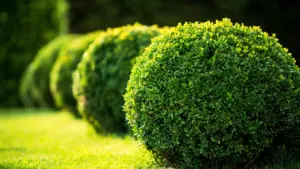
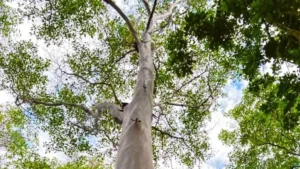
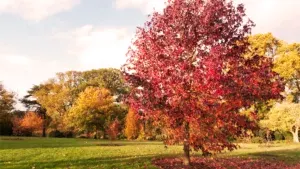
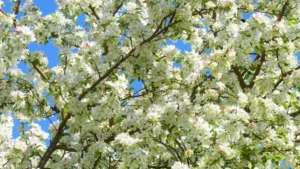

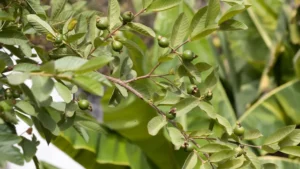
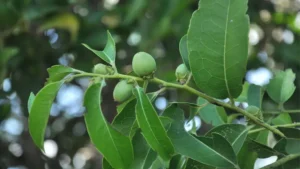
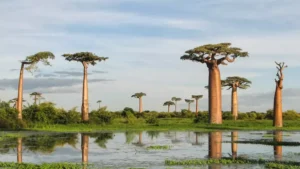
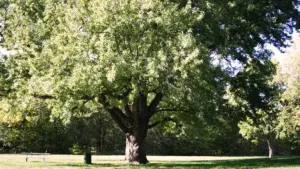
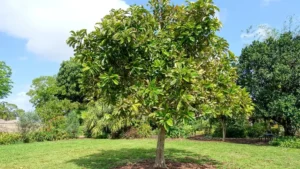
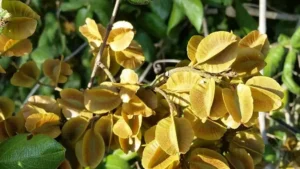

Leave your comment